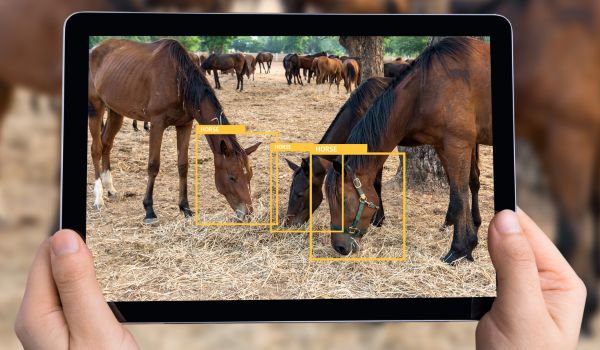Executive Summary:
Measuring AI Animal Detection Accuracy has become a ground-breaking tool in wildlife conservation and research, promising rapid and precise species identification.
Introduction:
Artificial intelligence has quickly advanced, opening the door for creative uses in many industries. AI Animal detection solutions, which have the potential to change the field of wildlife conservation completely, are one of the most compelling application cases.
To assure the usefulness of these technologies in practical settings, it is essential to develop rigorous procedures for monitoring their accuracy.
This blog examines the best practices and performance metrics that go into the thorough assessment of AI animal detection solutions.
Best Practices for Measuring the Accuracy of AI Animal Detection
A systematic strategy is necessary to accurately evaluate the performance of AI animal detection solutions and produce valid and insightful results.
The basic methods to gauge the effectiveness of AI animal detection are outlined in the following best practices:
- Data Collection:
The caliber and diversity of the dataset used to train and test the AI model are the cornerstones of any correct assessment. Animals in their native habitats must be shown in pictures or videos as part of the ground truth data collection process.
This data should cover a range of species, behaviors, lighting settings, and camera angles to represent situations in the actual world accurately. The AI model can learn detailed features and develop its detection abilities with high-resolution pictures and videos.
- Consistent Annotations:
Labeling the presence and position of animals in the pictures or videos constitutes an annotation of the dataset. It is essential to establish clear and consistent annotation criteria to eliminate ambiguity and guarantee that annotators correctly classify animals.
Trustable findings must maintain annotation quality and promote inter-annotator agreement through regular training and contact with annotators.
- Cross-Validation:
The dataset should be divided into training, validation, and test sets to assess the model’s performance. When evaluating how effectively a model generalizes to fresh, untested data, cross-validation approaches like k-fold cross-validation are useful.
Researchers can identify overfitting (when the model performs well on the training data but badly on the fresh data) and improve the model’s hyperparameters for greater accuracy by training on one subset and testing on another.
- Iteration and Fine-Tuning:
Models for AI animal detection should be seen as dynamic systems. Real-world deployment could bring up issues that weren’t apparent during testing. The model’s detection accuracy is improved over time by routinely fine-tuning it in response to feedback from field observations, which aids in adapting the model to shifting conditions.
By following these best practices, researchers and environmentalists may assure a thorough and accurate evaluation of AI animal detection solutions. These methods aid in developing AI models that are excellent at identifying and tracking animal species, assisting in wildlife protection, and advancing our understanding of the natural world.
Key Performance Metrics for Accurate AI Animal Detection:
A set of precise performance indicators that reveal the model’s advantages and disadvantages is necessary for assessing the accuracy of AI animal detection solutions. These metrics provide a way to measure how well the model can recognize and categorize different animal species in photos and videos.
The following major performance measures can be used to gauge how accurately AI can identify animals:
- Precision:
Precision, also known as positive predictive value, gauges how well the AI model predicts the future. Precision in the context of animal detection measures the proportion of successfully recognized animals to all the animals that the model correctly detected.
A model must yield fewer false positives for accurate wildlife monitoring, indicated by a high precision score.
- Recall:
Recall, often called sensitivity or true positive rate, measures how well a model can recognize every instance of a particular animal species in the dataset.
Recall that wildlife conservation measures how well a model captures all instances of a species, reducing the possibility of false negatives.
- Confusion Matrix:
A confusion matrix is a tabular summary of the model’s predictions compared to the actual results. It assists in locating many types of model flaws, including false positives and false negatives.
Confusion matrices shed light on particular difficulties the model confronts from a conservation perspective, allowing developers to concentrate on areas that need improvement.
- Average Precision:
When comparing models across various detection thresholds, Average Precision is especially helpful. It determines the area under the precision-recall curve, thoroughly evaluating the model’s accuracy in various conditions.
When there is a trade-off between recall and precision, this statistic is extremely useful since it enables developers to choose the threshold that best satisfies conservation objectives.
Relevance of Accurate AI Animal Detection in Wildlife Conservation
Conservation of wildlife is a vital effort to maintain the diversity of life on Earth and save threatened species and habitats. AI animal detection solutions are essential to this admirable endeavor because they provide cutting-edge capabilities for observing, researching, and preserving wildlife.
- Early Threat Detection:
Effective intervention depends on identifying possible animal risks, such as poaching, habitat loss, and disease outbreaks. AI animal detection solutions can continuously monitor wildlife habitats and notify authorities of any suspicious activity.
This early warning system improves the ability to mitigate threats and prevent future harm to endangered species.
Conclusion:
AI animal detection solutions are crucial for their successful implementation in wildlife conservation in the dynamic world of AI technology.
We pave the way for a future in which AI-driven solutions play a critical role in preserving our planet’s diverse and sensitive ecosystems by adhering to best practices, utilizing essential performance indicators, and comprehending their relevance.









